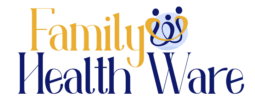FAQs about Facial Neuromuscular Rehab
Your quality of life may be severely impacted by facial paralysis. It seems to have an impact on every aspect of your life, and the repercussions can be psychological, emotional, or physical. Facial neuromuscular rehabilitation, which is used to regain the function of your facial muscles following an illness or accident, can be used to treat facial paralysis. We offer the answers to your inquiries concerning facial neuromuscular rehabilitation.
Facial Neuromuscular Rehabilitation: What Is It?
Facial paralysis treatment plans are individualized and include facial neuromuscular rehabilitation. Facial exercises are the mainstay of treatment, and you will perform them with a therapist’s assistance. These exercises use sensory input together with deliberate face motions. By gradually retraining your brain and facial muscles, this aids in the recovery of facial function.
Does My Duration of Facial Paralysis Matter?
Regardless of the duration since the beginning of your disability, face neuromuscular rehabilitation is beneficial. You cannot start treatment until your condition is stable. During the acute phase, the emphasis is on self-management to avert further complications and facilitate the healing of the facial nerve. Enhancing facial symmetry, removing undesired motions, and selective muscular control are the main goals of post-acute care.
Is Facial Neuromuscular Rehabilitation Right for Me?
Facial neuromuscular rehabilitation can help you regain facial function if you suffer facial paralysis from Bell’s palsy, a brain tumor, cancer, Ramsay Hunt Syndrome, Sykninesis, or Traumatic Facial Paralysis.
How Does Treatment for Facial Neuromuscular Rehabilitation Start?
Your therapist will perform a thorough assessment before beginning treatment. This will include still photos, videos, and previous medical documents. We’ll assess your oral motor skills when you speak, eat, and drink.
Your prognosis and available treatments will be discussed with your therapist. They will make sure your expectations for the course of your treatment are reasonable. They will also explain any pertinent self-care techniques and enlighten you about your illness.
What Kinds of Facial Paralysis Treatments Are Available?
It is frequently advised to combine facial neuromuscular rehabilitation with other forms of therapy. Exercises for relaxation, face tapping, electrical stimulation, eyelid-specific action exercises (ESAEs), and facial strengthening exercises are a few examples of these.
Does Biofeedback Work Well?
A useful component of your facial neuromuscular rehabilitation may be biofeedback. It has been demonstrated to shorten recovery periods, lessen synkinesis, and enhance facial symmetry. It’s crucial to remember that biofeedback is ineffective by itself. To get effective results, it must be used with other strategies.
What Makes Facial Neuromuscular Rehabilitation a Good Option?
Your quality of life may suffer significantly if you have facial paralysis. You might find it difficult to eat and drink, and you might not be able to smile. You can recover appropriate face movement and functionality with the use of facial neuromuscular rehabilitation.
San Diego, California, offers Face Neuromuscular Rehabilitation
Get in touch with Blue Illusion Beauty if you’re looking for facial neuromuscular rehabilitation in San Diego, CA. Our exclusive focus is facial rejuvenation, both surgical and noninvasive. To help you appear your best, we provide facelifts, Botox, and skin treatments in addition to facial neuromuscular rehabilitation.


 Veneers: A Popular Cosmetic Solution for a Beautiful Smile in London
Veneers: A Popular Cosmetic Solution for a Beautiful Smile in London  Gifted Educational Programs
Gifted Educational Programs  Innovations in Health Screenings: Exploring the Latest Technologies in Clinic Services
Innovations in Health Screenings: Exploring the Latest Technologies in Clinic Services  Dental Crowns –Restoring Strength, Function, And Aesthetics.
Dental Crowns –Restoring Strength, Function, And Aesthetics.  One-Person Wonder: Making Waves in the Massage Industry in Gunma
One-Person Wonder: Making Waves in the Massage Industry in Gunma  How Cataract Surgery in Nashville Improves Vision and Quality of Life
How Cataract Surgery in Nashville Improves Vision and Quality of Life